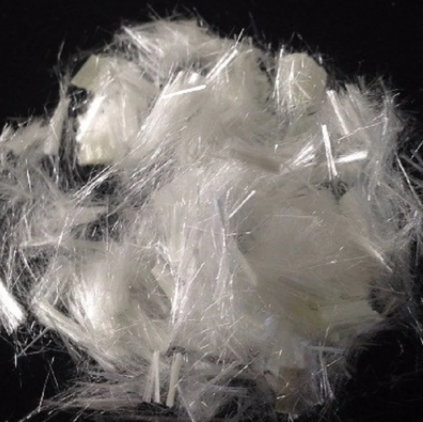Polypropylene Fabric: An Ultimate Guide to Its Uses and Advantages
Polypropylene fabric, commonly known as PP fabric, is a versatile material with a wide range of applications. From industrial uses to everyday products, polypropylene fabric has become an essential component in various industries due to its unique properties and benefits. In this comprehensive guide, we will explore the diverse uses and advantages of polypropylene fabric, delving into its characteristics, manufacturing process, and potential environmental impact.
Polypropylene fabric is a type of synthetic textile made from a polymer called polypropylene. This thermoplastic polymer is derived from propylene monomers and is known for its exceptional durability, strength, and resistance to moisture and chemicals. The fabric's non-toxic nature makes it safe for various applications, including those involving contact with food.
The Manufacturing Process of Polypropylene Fabric
The production of polypropylene fabric involves a complex manufacturing process that transforms the polymer into a usable textile. The steps generally include:
Polymerization: The first step in creating polypropylene fabric is polymerization, where propylene monomers are chemically bonded to form polypropylene polymer chains.
Extrusion: The polymer is then fed into an extrusion machine, which melts it and forms it into long filaments. These filaments are then stretched to improve the fabric's strength.
Spinning: After extrusion, the filaments are spun into fibers. The spinning process can be adjusted to achieve different characteristics, such as the fabric's thickness and texture.
Weaving or Non-Woven Formation: The fibers are woven together to create traditional polypropylene fabric or bonded together to form non-woven polypropylene fabric, depending on the intended use.
Finishing: The fabric undergoes a finishing process, which includes treatments to enhance its properties, such as UV resistance, water repellency, or flame retardancy.
Uses of Polypropylene Fabric
Polypropylene fabric finds applications in various industries due to its exceptional properties. Some of its most common uses include:
1. Geotextiles in Civil Engineering
Polypropylene fabric is widely used in civil engineering as geotextiles. These geotextiles are employed for erosion control, soil stabilization, and reinforcement of embankments. They provide an effective barrier against soil erosion, helping in the construction and maintenance of roads, railways, and other infrastructure projects.
2. Packaging and Bags
PP fabric's strength and tear resistance make it ideal for packaging materials and bags. From reusable shopping bags to industrial packaging, polypropylene fabric offers a cost-effective and environmentally friendly alternative to traditional materials.
3. Medical Textiles
In the healthcare industry, polypropylene fabric is utilized in the production of medical textiles. These textiles include surgical gowns, drapes, and covers due to their hypoallergenic properties and ability to prevent the spread of infections.
4. Automotive Applications
Polypropylene fabric is commonly used in the automotive industry for interior components such as car seats, door panels, and headliners. Its resistance to fading, moisture, and chemicals make it an excellent choice for these applications.
5. Agriculture and Gardening
In agriculture, polypropylene fabric is utilized as crop covers to protect plants from harsh weather conditions and pests. Additionally, it is used in gardening for weed control and as a breathable barrier for soil and mulch.
6. Home Furnishings
Polypropylene fabric is found in various home furnishings, including upholstery, rugs, and carpets. Its durability and stain resistance make it a popular choice for households with pets and children.
7. Filtration Media
Polypropylene fabric serves as an effective filtration media in applications such as air filters, water filters, and medical filters. Its high strength and resistance to moisture make it an ideal material for these purposes.
8. Hygiene Products
In the hygiene industry, polypropylene fabric is used for manufacturing products such as baby diapers, adult incontinence products, and feminine hygiene pads. Its softness, breathability, and absorbency make it suitable for these sensitive applications.
9. Furniture and Mattresses
Polypropylene fabric is employed in the production of furniture and mattresses due to its tear resistance and ability to withstand daily wear and tear.
Advantages of Polypropylene Fabric
Polypropylene fabric offers several advantages over other materials, making it a preferred choice for numerous applications:
1. Lightweight and Strong
Polypropylene fabric is lightweight, yet it possesses impressive strength and tear resistance. This combination of qualities makes it ideal for various applications where both durability and easy handling are essential.
2. Moisture Resistance
One of the standout features of polypropylene fabric is its inherent resistance to moisture and water. This property makes it perfect for applications that involve exposure to liquids or wet environments.
3. Chemical Resistance
PP fabric is highly resistant to a wide range of chemicals, making it suitable for use in areas where contact with chemicals is common.
4. UV Resistance
Polypropylene fabric exhibits excellent resistance to UV radiation, ensuring that it maintains its color and structural integrity when exposed to sunlight.
5. Cost-Effectiveness
Polypropylene fabric is a cost-effective material compared to many other textiles. Its durability ensures a longer lifespan, reducing the need for frequent replacements.
6. Recyclability
As an environmentally friendly material, polypropylene fabric can be recycled and repurposed, contributing to sustainability efforts.
Conclusion
Polypropylene fabric's versatility and advantageous properties make it an indispensable material in numerous industries. From civil engineering and automotive applications to medical textiles and home furnishings, the uses of PP fabric are vast and diverse. Its strength, moisture resistance, and chemical resistance contribute to its wide popularity. Moreover, its cost-effectiveness and recyclability align with modern sustainable practices.




